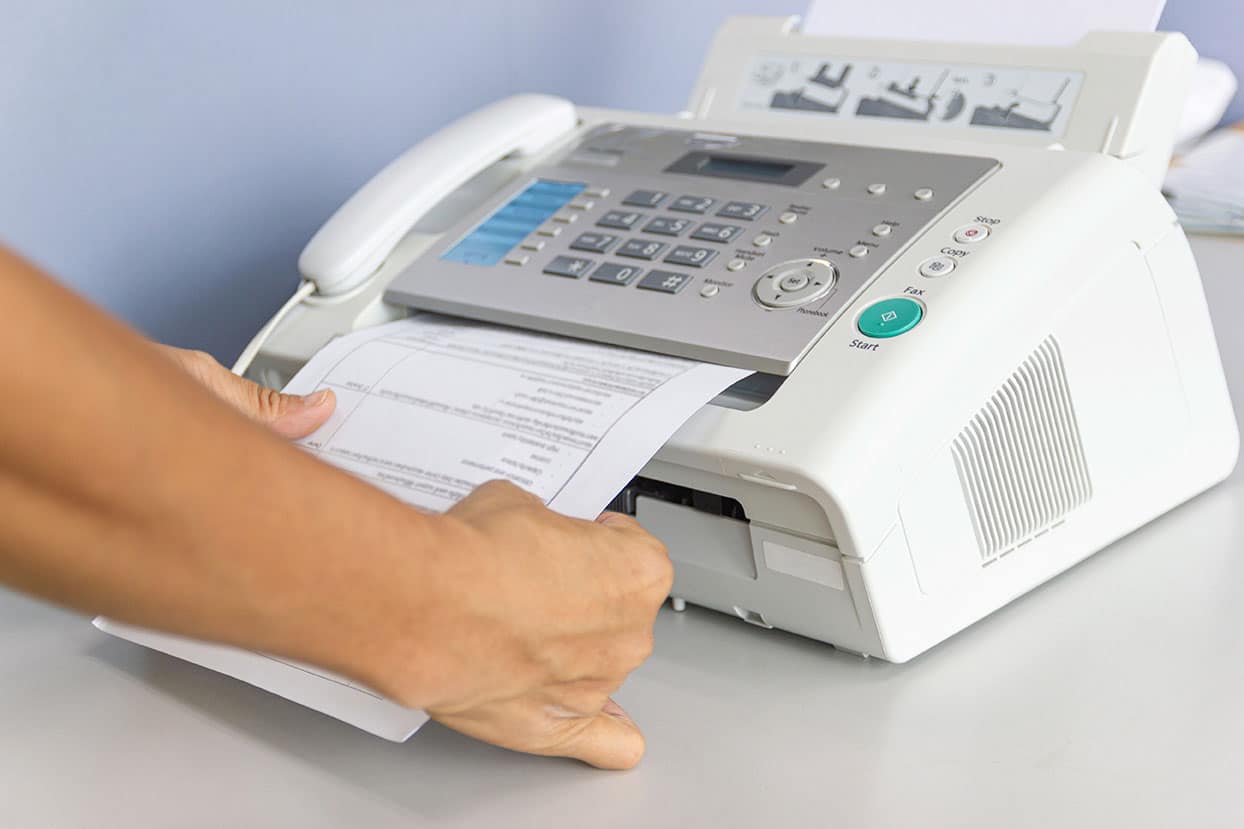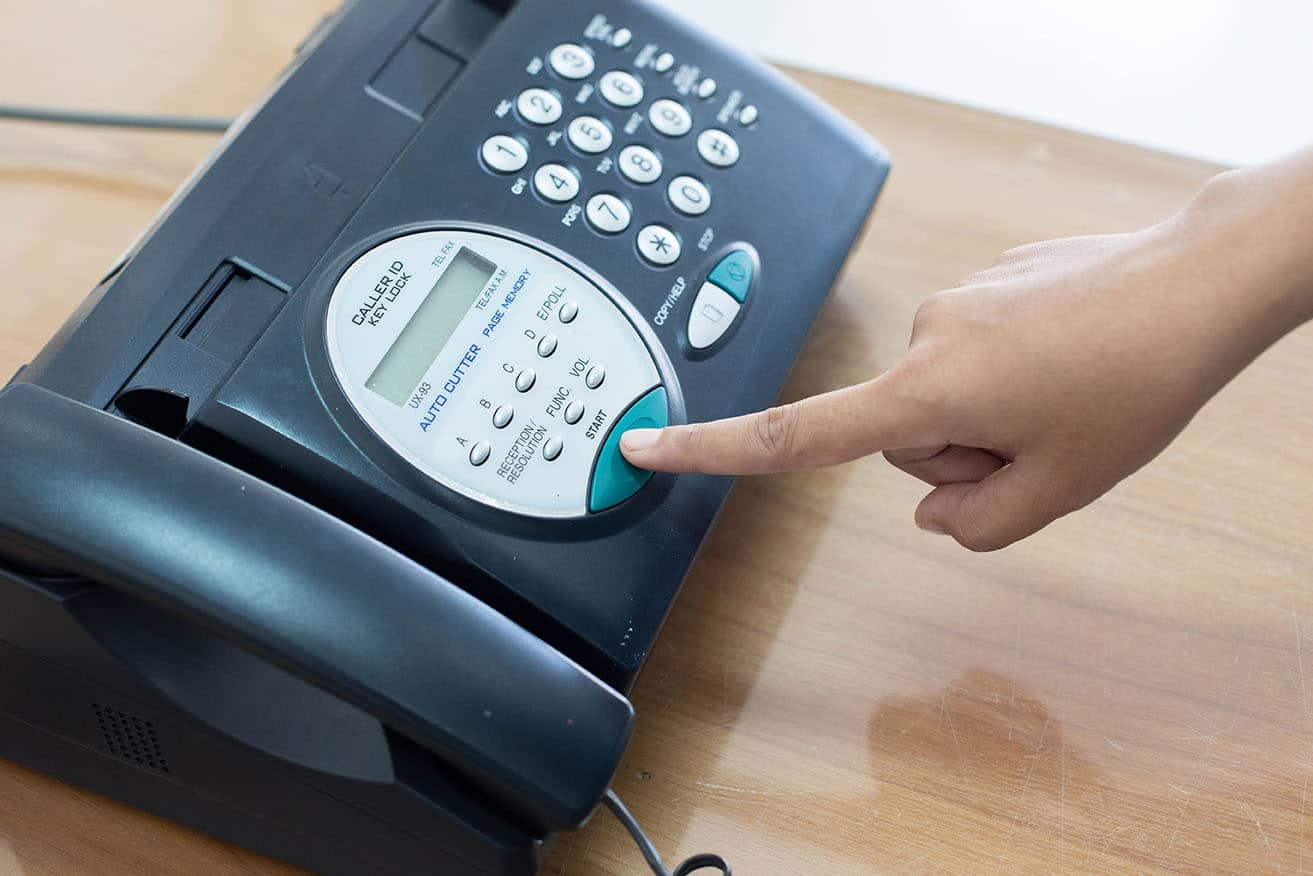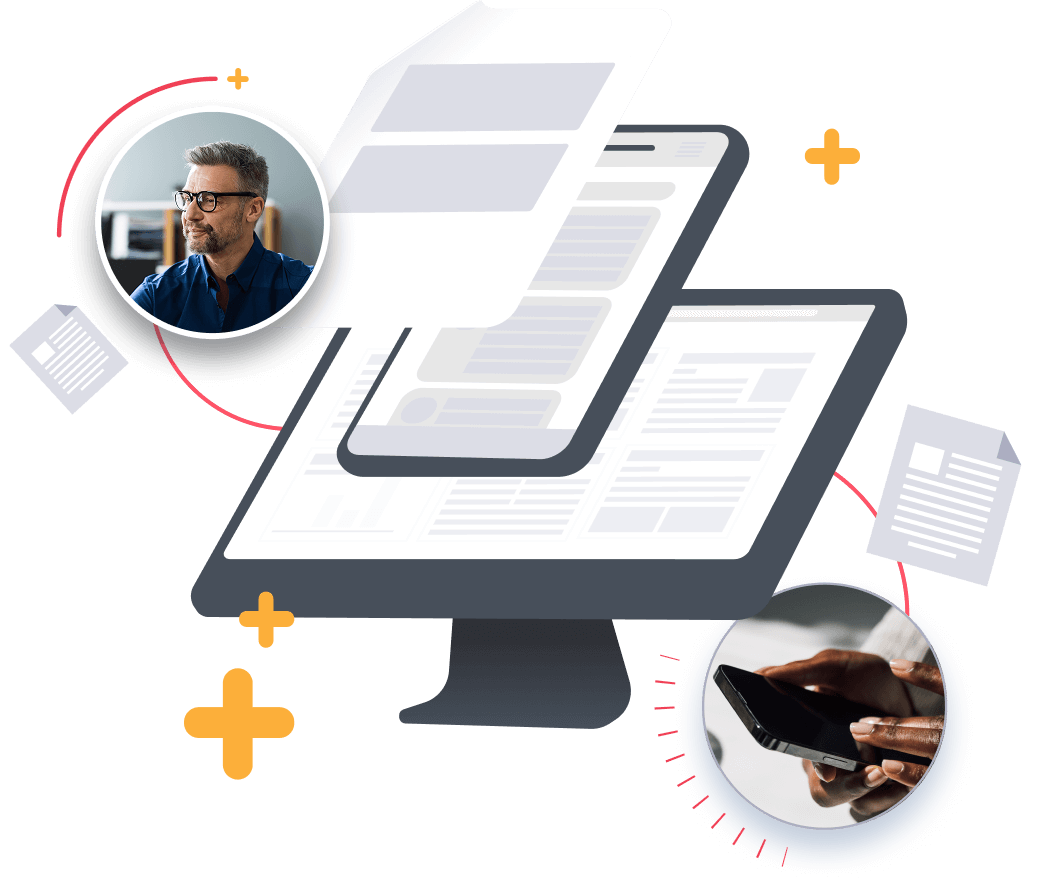How Does a Fax Machine Work? Step-by-Step Guide
What is a Fax Machine?
A fax machine is a device that enables users to scan and share documents using a phone line. Before the invention of the internet, the fax machine was the primary method for sharing documents with clients, colleagues, and friends. Today, it remains a vital tool for many organizations.
So, what are the components of a fax machine, and how does it work? A fax machine consists of a scanner device, a telephone connection, a paper tray, and an output tray.
These components allow users to scan and send their documents and receive incoming fax messages. After scanning a document, the sender enters the recipient’s fax number and hits the Send button. The fax machine will then process the document and send it to their contact telephonically.
How To Set Up A Fax Machine
Modern fax machines are typically easy to set up. They feature intuitive user interfaces and clear menus that make it simple to send and receive documents.
To set up a fax machine, simply:
- Call your phone company to organize a phone line for your fax
- Unbox your machine and connect it to the new fax line
- Load the machine with fax paper and toner or ink
- Plug your fax machine in and turn it on
- Press “dial” or “fax” and make sure you can hear a dial tone: This means your fax line is connected and working
- Print a test page from your machine to make sure it’s all running correctly
Once you’ve followed these steps, you can send a fax from your fax machine.
Fax machines also have features like personalized greetings, which you can set up through the menu screen to give your faxes a consistently professional appearance.

How Do Fax Machines Receive Faxes?
When another machine dials in to your fax machine, the two systems perform a “handshake” over the phone line. During this process, a series of beeps helps establish a connection between the two machines. These signals tell the sending fax machine that yes, this is a fax it has dialed, and tell the receiving machine to prepare to receive data.
From there, the audio signals will be recorded in the receiving fax, where they are converted back into printable data and printed out in real time on the fax paper.
Once the fax transmission has finished, the receiving machine sends a confirmation message signal back to the sending fax to let the sender know the fax was successful.
You can help make sure you get all the faxes you’re being sent by following a few top tips, including:
- Always keep your machine turned on and connected to the phone line
- Make sure you have enough toner and paper loaded into your fax
- Keep your fax machine away from electronics that could interrupt signals or create interference
- Keep your fax machine on a dedicated fax line
Don’t interrupt faxes by picking up the handset while faxes are coming in, or going out. It’s good practice to check the cover sheet to make sure you got the same number of pages listed there, and also to confirm your fax receipt to the sender by phone or email.
How Do Fax Machines Work: A Detailed Breakdown of Functionality
Fax machines work by converting the text and images on a piece of paper into a series of audio tones. These tones are sent as digital data through phone lines to the receiving fax machine. The receiving machine decodes the audio tones back into the original text and images, which are printed out for the recipient.
Although fax machines may seem like complicated pieces of hardware, their functionality is actually quite straightforward. Here’s a quick step-by-step process on how they work:
1. Documents are Created or Scanned
To start faxing, you first need to prepare or scan the document you wish to transmit. Typically, this is achieved using a computer or a digital scanner.
Documents are converted into a digital signal made up of 0s and 1s so that the information can be transmitted over a standard phone line.
3. Recipient’s Information Is Entered
After the document is prepared, the fax machine is set up with the recipient’s fax number or email, as well as a cover letter.
After the fax is prepared and submitted, the fax machine will dial the recipient’s number and transmit the digital signal to another fax machine.
5. Document Receipt and Printing
The receiving fax machine decodes the digital signal and reconstructs the document. The document is then printed out on the receiving end.
How a Fax Machine Reads Your Fax Document
Before your fax machine can transmit your paper document to your recipient’s fax machine, it first needs to “see” the document and record what’s on it.
We use the term “see” because, when you feed your document into a fax machine, it uses a built-in photo sensor to view the page as a series of tiny squares (maybe just a hundredth of an inch each), and then records each square as either black or white. The reason older fax machines often used a rotating drum for paper-feeding was so the machine could record a single line’s worth of these tiny squares at a time, then rotate to the next line.
Once the fax machine has recorded a page’s contents, it converts each of the squares into a sequence of audio tones, using different tones to signify that a square is either white or black. (Cool, huh?)
With the page’s info recorded on your fax machine, now it’s ready to transmit.
How a Fax Machine Sends Your Fax
To send your fax, your fax machine (in most cases) actually uses the plain-old telephone network. When you dial your recipient’s fax number on the machine’s keypad, and the two machines connect, your machine starts sending those audio tones over phone lines.
This is what you’re hearing as your fax machine makes those horrible screeching and beeping noises. It’s screaming to your recipient’s fax machine, telling it what to print: “Black square! White square! Black! Black! White, white, white! Black, white, black!”
In other words, you’ve probably listened to many of your faxes translated into “telephone-ese” without realizing it. Understanding how a fax machine works helps explain this noise, as it’s simply the machine transmitting the document in audio tones.
How to Send a Fax
Now that we know how a fax machine works, let’s look at how to send a fax from a traditional fax machine, step-by-step.
- First, make sure your machine is turned on and connected to the phone line
- Place your documents in the feeder — you can use the symbol on the tray to tell you which way up to put your documents. Make sure they’re in the order you want them to arrive in, with the first page on top.
- Place a cover page on top, this should include the addressee, your details (sender), and say how many pages should be sent
- Enter the fax number and hit “Fax” or “Send”.
The machine will scan your documents, convert the data into a transmission signal and send it to your intended recipient. Depending on the age and model of your machine, it will either print out a confirmation report, display a confirmation message on the LED display or both.

Can Documents Be Sent Securely Through A Fax Machine?
Yes, sharing documents via a fax machine is secure if users use encryption of password-protect sensitive files. Users should also avoid leaving critical data or documents on public machines in case someone else picks up the printout. Most modern fax machines offer security features like PIN codes and user logins, which makes the process of faxing a document highly secure.
The Benefits of Online Faxing and Its Continued Relevance
In spite of the increasing popularity of email and digital messaging, faxing is still a great tool for sending documents quickly and securely. With the growing popularity of cloud-based faxing services, faxing is also now more convenient and accessible than ever. These online faxing services offer affordable options for both personal and business use, making them highly scalable. Additionally, they provide features such as document storage, digital signatures, and even mobile faxing options.
Send Faxes From Anywhere
Even without a traditional phone line, you can take advantage of the convenience offered by online faxing solutions like eFax. With eFax, you can send faxes from anywhere with an internet connection, whether through your laptop, tablet, or even your smartphone. This allows you to send important documents from any internet-enabled device you want, freeing you from the physical restrictions of a fax machine.
Unlimited Fax Storage and Lower Costs
Using online fax services, you get to keep all your faxes securely stored in the cloud, which means you no longer have to concern yourself with depleting paper or toner supplies. This convenience allows for quick retrieval of previously sent or received documents, saving you from sifting through piles of paper files. Solutions like eFax offer unlimited cloud storage with all subscription plans, freeing you from the hassles of long-term contracts and the recurring costs associated with maintaining a traditional fax machine and a separate phone line.
Streamline Your Workflows and Increase Efficiency
Traditional fax machines can be time-intensive and cumbersome. Switching to online faxing streamlines your fax management, making the process much more efficient. It eliminates the steps of printing, manually operating the fax machine, and waiting for fax transmissions. With online faxing solutions like eFax, you dispatch multiple faxes at once with just a few clicks from your mobile device. Try eFax today to experience the simplicity and efficiency of managing your faxes online.
Fax Machines vs. Online Fax Services
Fax machines are physical devices that require the use of ink, toner, paper and a telephone line to submit documents telephonically. Whereas online fax services use the internet to send and receive fax messages.
| Digital Fax | Analog Fax |
|---|---|
| Sends faxes from any internet-connected device using encrypted digital data. | Sends analog signals over traditional phone lines from a fax machine fixed in one place. |
| Uses any smartphone, tablet, laptop, desktop computer or even multi-function printer to send faxes over the internet. | Requires an expensive and cumbersome fax machine. |
| Uses no paper, toner or ink, saving money | Requires expensive paper and fax toner or ink |
| Can send any image or document file, including scanned documents via fax. | Can only send physical documents |
| Creates digital files that you can save, store and organize in cloud-based storage. | Requires a physical filing system and storage for record retention. |
| Secure with high-level encryption and other security measures. | Less secure, with documents left exposed on machines and also vulnerable to phone line interception. |
| Faxes are more reliable, higher quality and easier to read because there are fewer problems with scanning issues or low ink. | Often unreliable due to issues including busy signals, paper jams and scanning or ink issues |
DEVICE/HARDWARE
SUPPLIES/COST
DOCUMENT TYPE
STORAGE/FILING
SECURITY
RELIABILITY/QUALITY
Send and Receive Faxes in Minutes
FAQ’s Around How a Fax Machine Works
Faxing works by transmitting documents between senders and recipients using a fax number. How fax machines work is slightly different from how cloud faxing solutions work, in that digital faxing services use the internet and integrate with your existing workflows, while fax machines rely on analog signals sent by phone lines.
No, with online fax services like eFax, a traditional phone line isn’t necessary. As long as you have an internet connection, you can send faxes directly from your device.
Definitely. With online fax services like eFax, you can easily send faxes from your computer or any internet-enabled device, eliminating the need for a traditional fax machine or phone line.
Yes, it is possible to receive(and send) faxes without a fax machine.
eFax provides an email notification once your fax has been sent successfully. This feature allows you to efficiently track your sent faxes and confirm their receipt by the recipient.
Fax machines typically use regular plain white paper. The type of paper used for faxing may differ depending on the type of machine, as some may require specialized thermal paper to prevent data loss or distortion. However, most fax machines should be compatible with plain white paper.
Printers are used to print hard copies of documents, whereas fax machines are used to send documents electronically. Both machines can create digital versions of documents, but the difference is that fax machines enable users to share documents with contacts in different locations.
Yes, you can connect your computer to a fax machine. Most modern fax machines have software solutions that enable you to connect your computer to the fax machine. Others have USB ports that allow you to plug your computer into the fax machine directly.
No, fax machines use a phone line rather than an internet connection. A fax machine sends data digitally via a phone line, which means there’s no need to connect to the Internet. However, some fax machines do offer WiFi capability.





